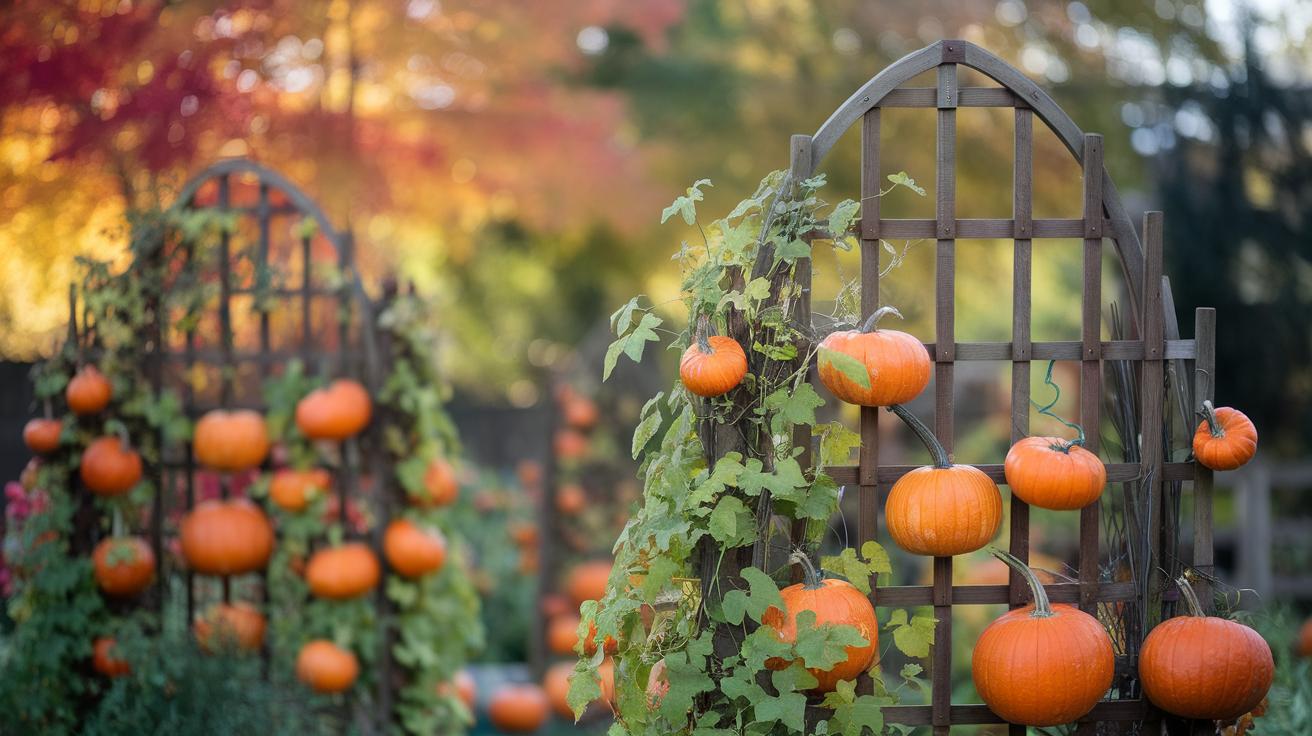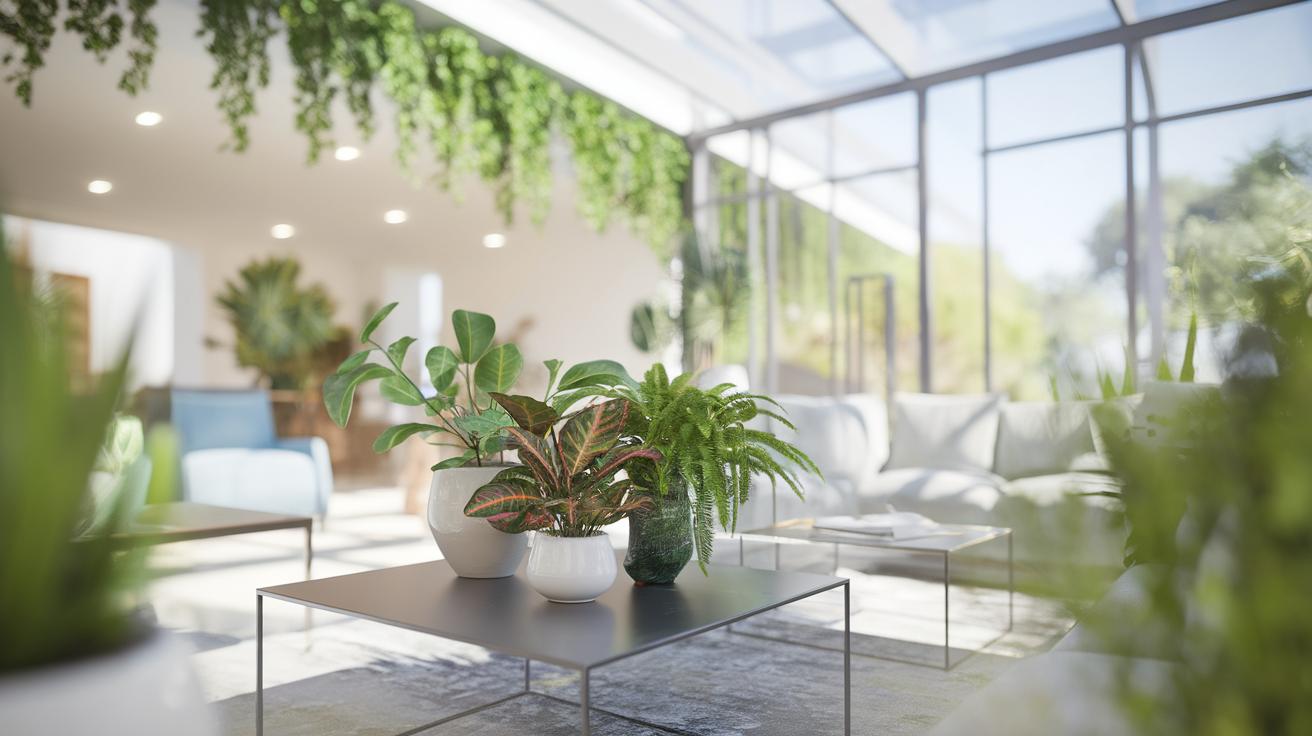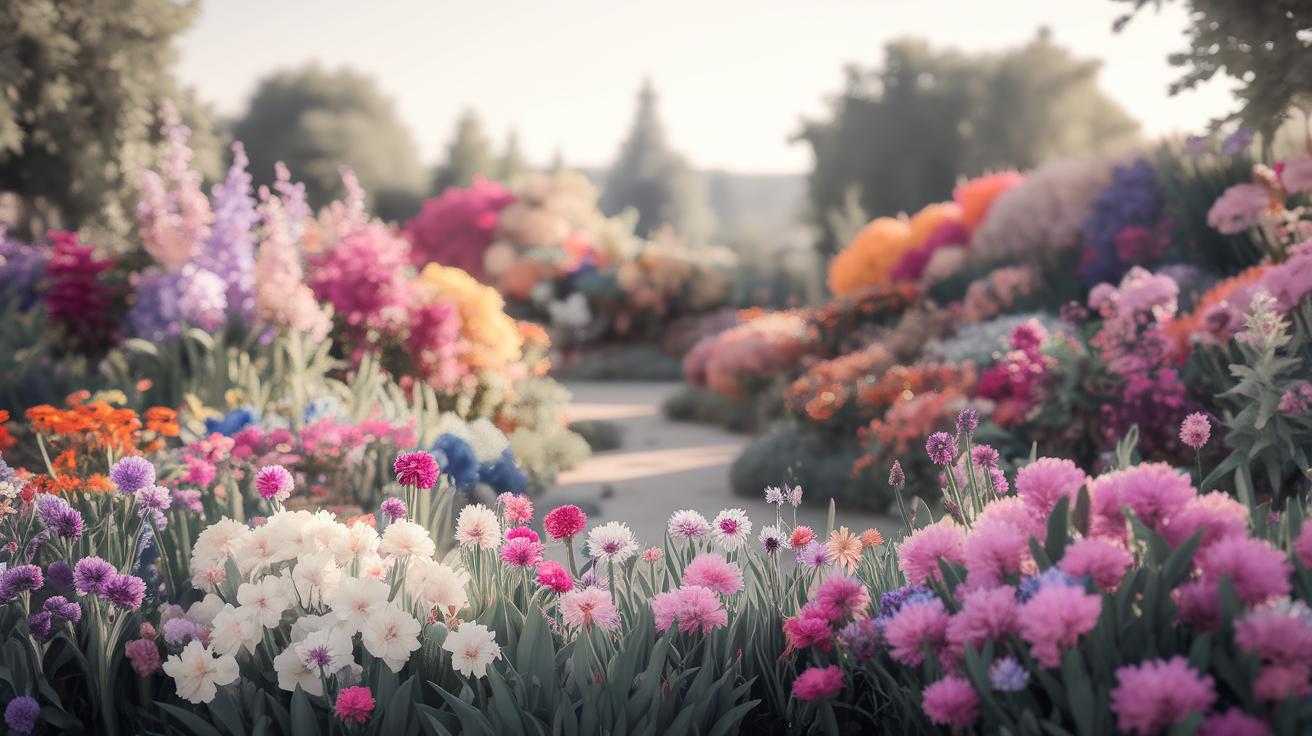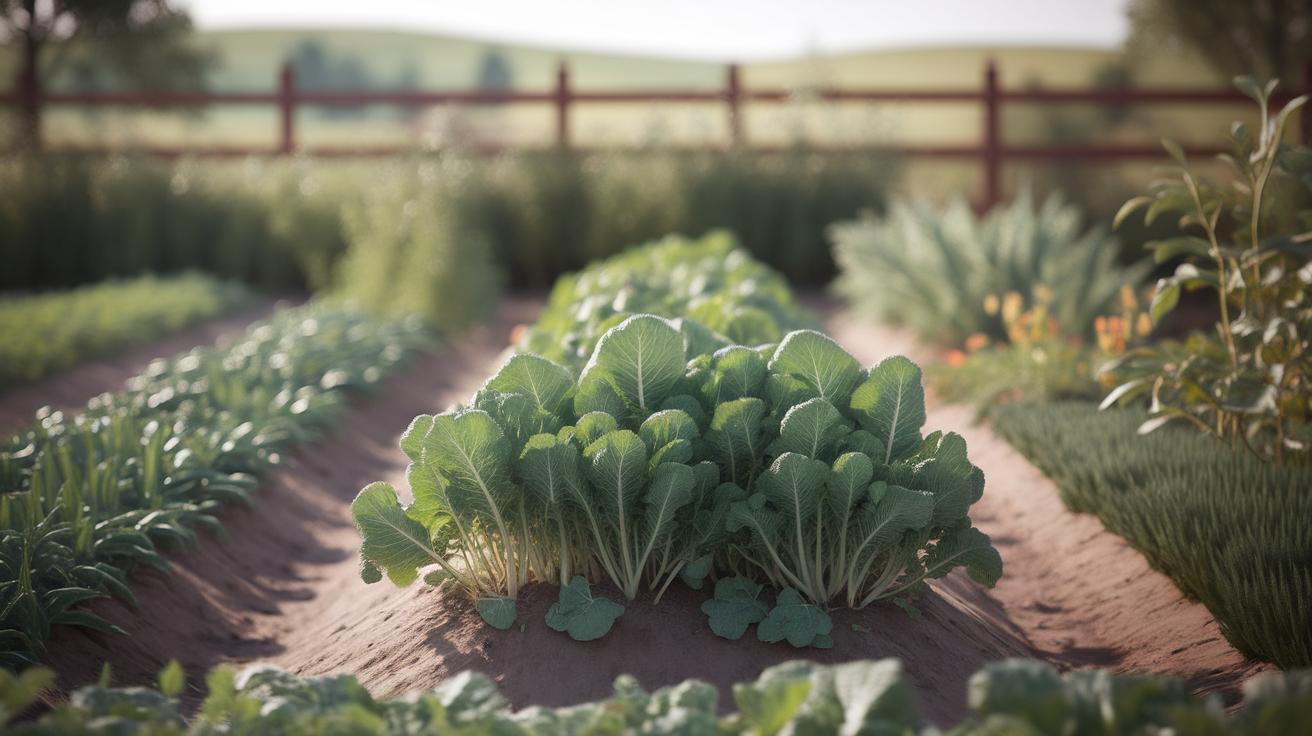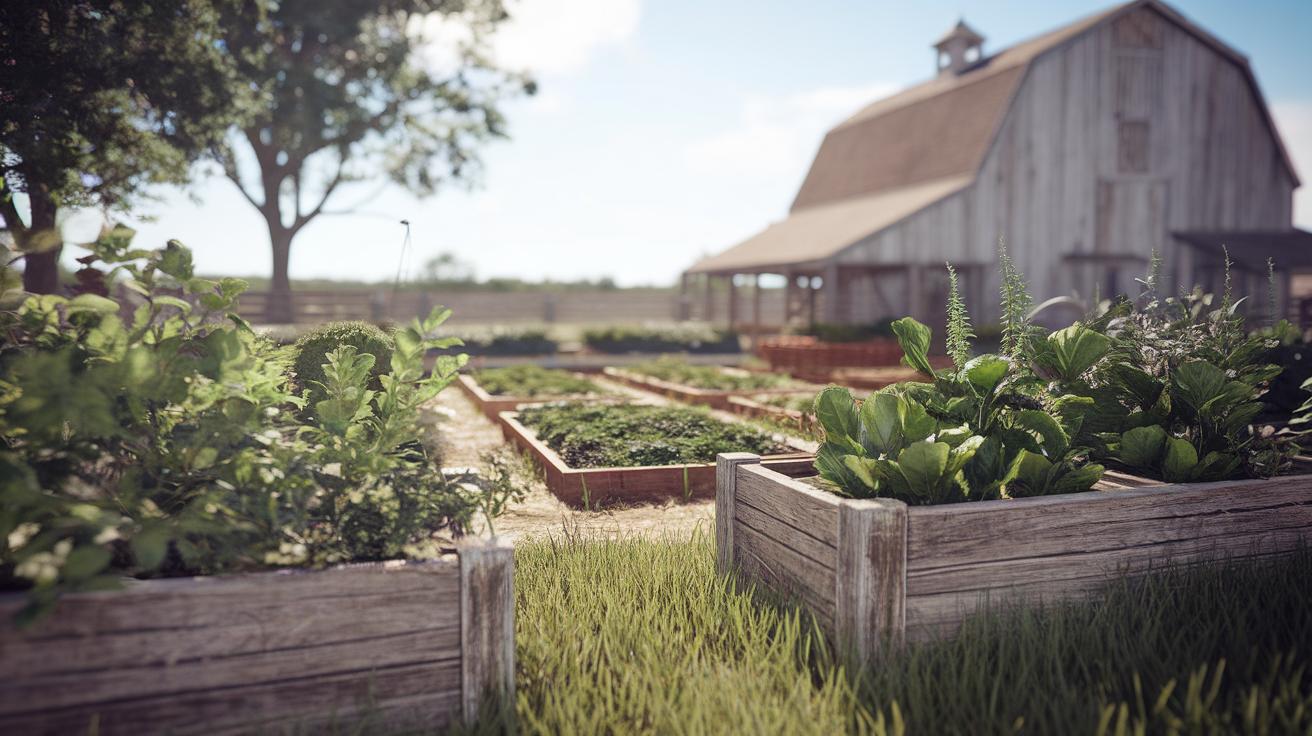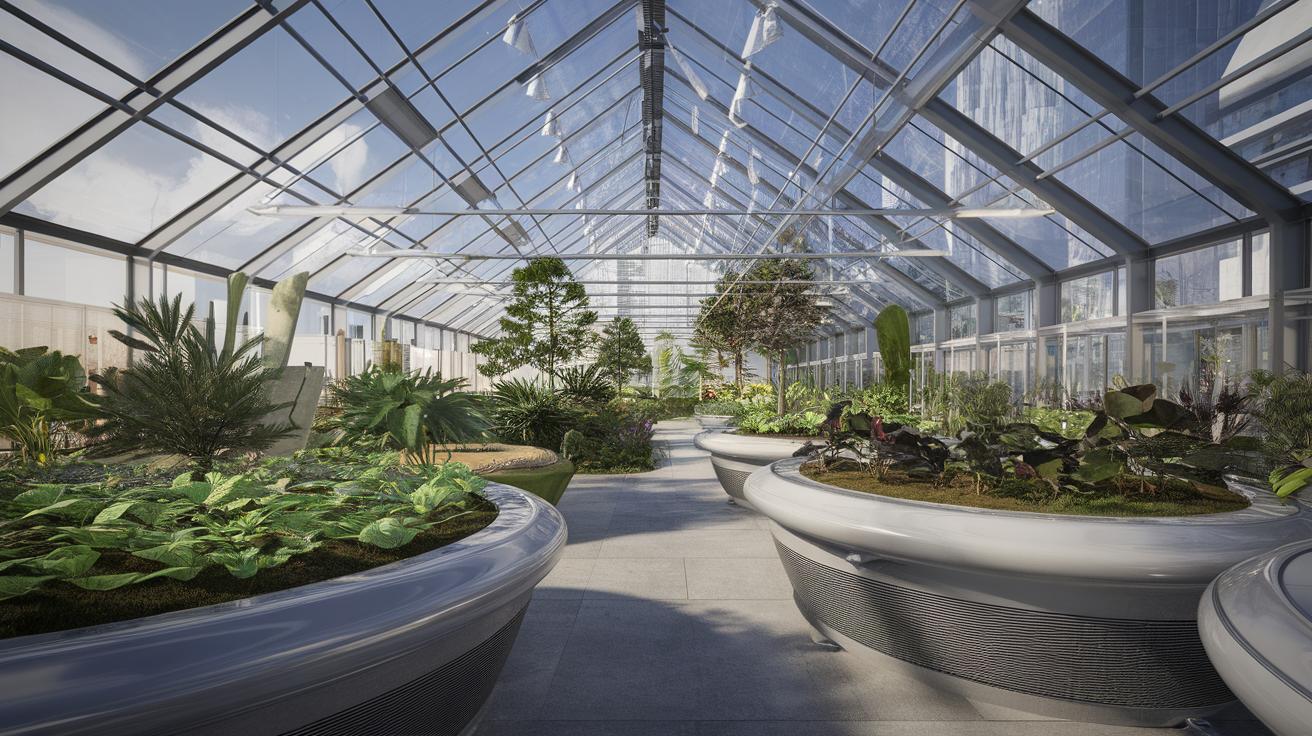Introduction
Gardening enthusiasts often seek innovative ways to maximize their space while adding aesthetic appeal to their gardens. One such creative approach is using a pumpkin trellis, which not only supports the growth of pumpkins but also enhances the overall visual interest of a garden. Pumpkin trellises allow gardeners to grow these sprawling vines vertically, creating an eye-catching display that can be both functional and beautiful. This article explores a variety of pumpkin trellis ideas, perfect for festive gardens, ensuring you can enjoy a charming landscape while optimizing your harvest.
As we talk about the world of pumpkin trellises, readers will discover diverse designs that cater to different tastes and garden settings. From rustic wooden structures to modern metal frames, each trellis concept provides a unique way to support pumpkin plants. Moreover, these designs can be tailored to fit any garden style, whether you prefer a traditional aesthetic or a contemporary flair. This guide aims to inspire gardeners of all levels to embrace the potential of pumpkin trellises in their outdoor spaces, cultivating not just plants, but an inviting atmosphere for family and friends.
Understanding the Benefits of a Pumpkin Trellis Explore the Advantages of Using a Trellis for Pumpkin Plants
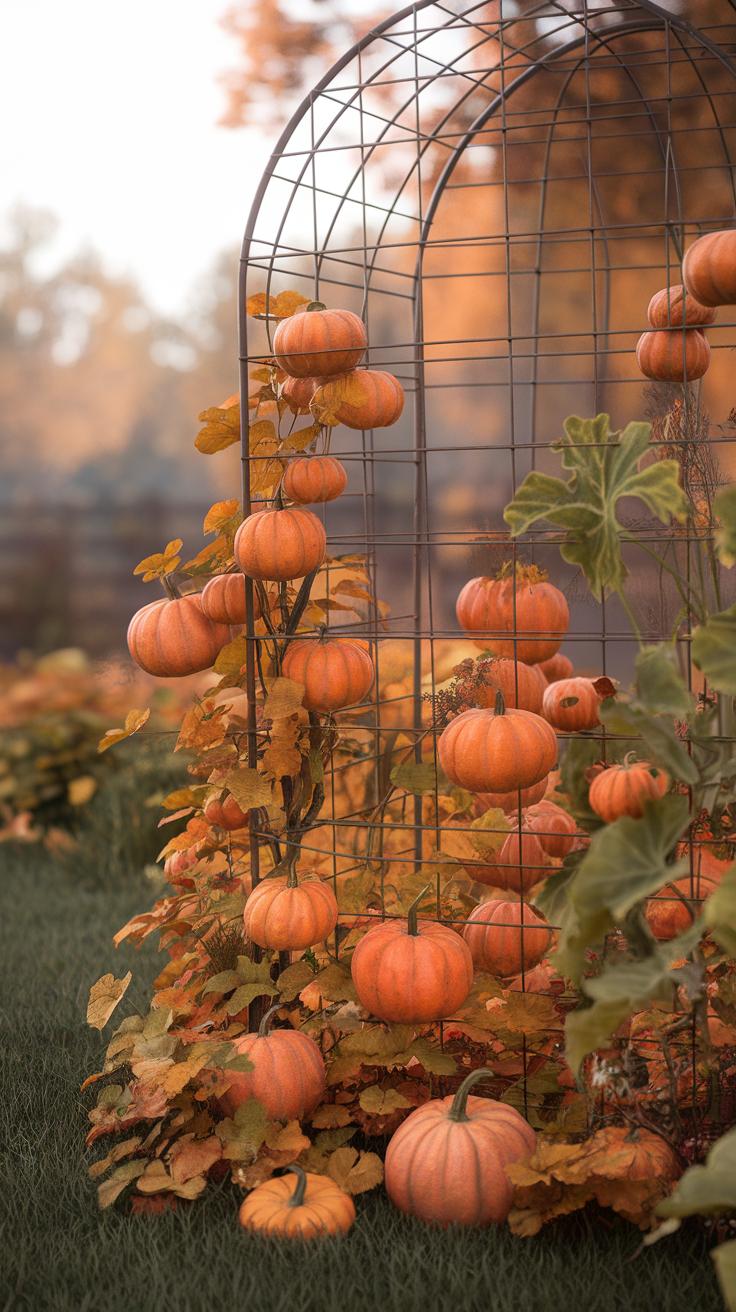
Utilizing a pumpkin trellis offers significant advantages for both novice and seasoned gardeners. Saving space ranks among the top benefits since vertical growth minimizes the ground area needed for sprawling pumpkin vines. This approach not only frees up valuable garden space for other plants but also enhances the overall layout of the garden, making it more visually appealing. Improved air flow is another critical advantage; by allowing light and air to circulate freely among the leaves, a trellis can help reduce the risk of fungal diseases that often plague pumpkin plants.
The vertical growth enabled by a trellis allows for better visibility of the developing pumpkins. This positioning can lead to increased yields, as the pumpkins are less likely to rot or get damaged by soil pests. In essence, a well-designed pumpkin trellis provides both aesthetic and practical benefits, fostering a bountiful harvest while elevating the beauty of festive gardens.
Choosing the Right Materials for Your Trellis
Selecting suitable materials for a pumpkin trellis is key to its stability and efficiency. Wooden trellises, often made from durable cedar or treated lumber, offer a natural look that blends seamlessly into garden landscapes. These materials can withstand the weight of growing pumpkins while providing the necessary support.
Metal trellises, constructed from galvanized steel or wrought iron, are known for their longevity and strength. This type of trellis not only supports heavy vines but also adds a modern flair to garden aesthetics. For the eco-conscious gardener, recycled materials such as old doors, pallets, or fencing can be creatively repurposed into functional trellises, promoting sustainability while saving costs. Whatever material you choose, ensuring structural integrity will guarantee your pumpkin plants thrive and yield abundant harvests.
Choosing the Right Materials for Your Pumpkin Trellis
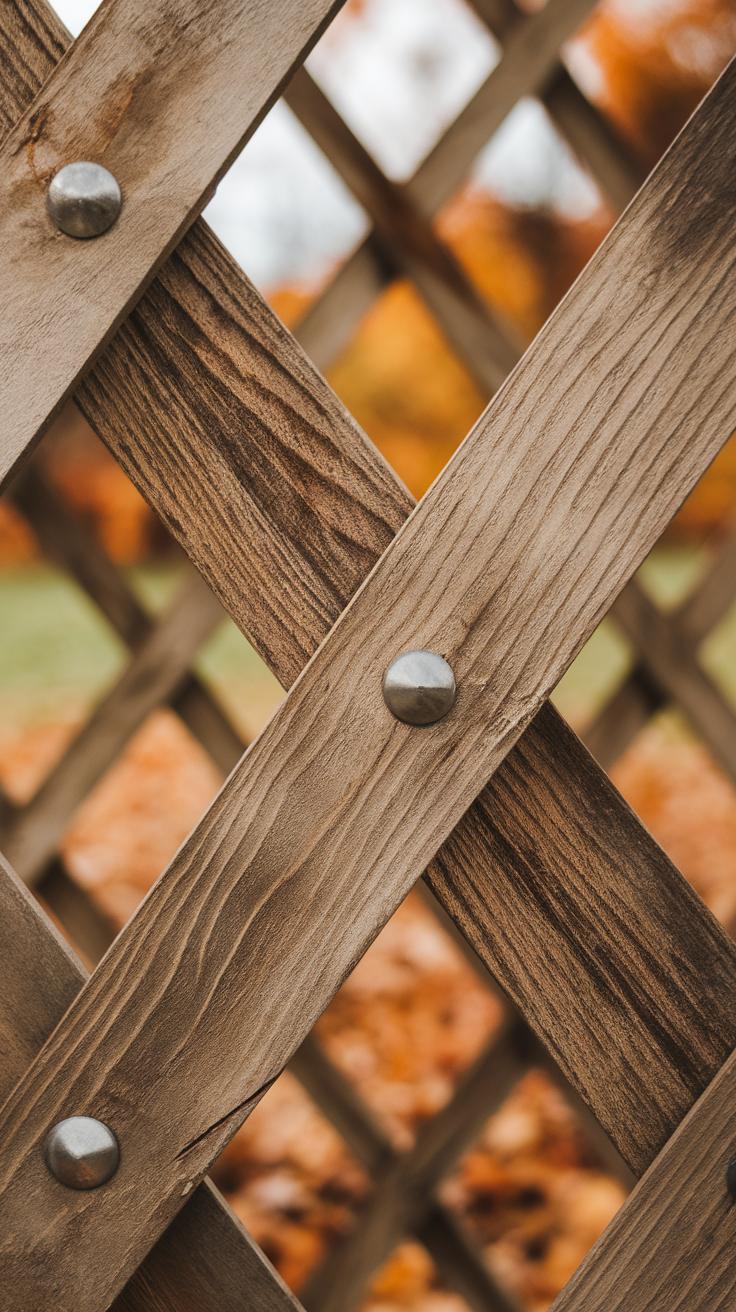
Materials Best Suited for Pumpkin Trellises
When constructing a pumpkin trellis, thoughtful selection of materials plays a pivotal role in achieving both practicality and aesthetics. Wood remains a popular choice; it is easily accessible and blends seamlessly with the natural environment. Cedar, for instance, boasts natural resistance to decay, ensuring longevity. Metal, like galvanized steel or aluminum, offers a more modern touch with superior strength, making it an ideal option for heavier pumpkin varieties.
For a budget-friendly and eco-conscious approach, consider utilizing recycled items. Old pallets or wooden crates can be transformed into unique trellis structures, giving your garden a rustic edge. Additionally, repurposed materials not only save costs but also contribute to sustainability. Each option presents its own unique benefits; selecting the right material aligns with your garden’s theme and enhances your overall pumpkin-growing success.
Designing Your Pumpkin Trellis StepbyStep Guidance for Creative Trellis Ideas
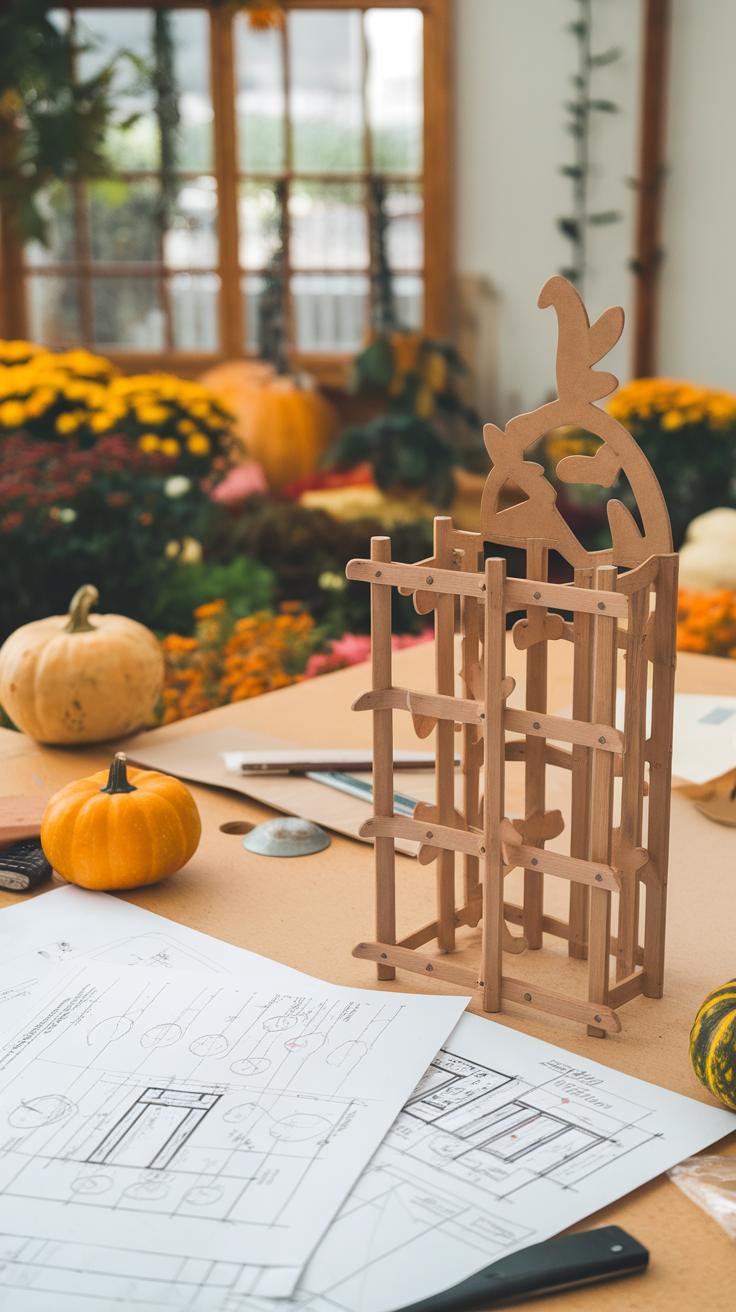
Simple Structures for New Gardeners
Starting with simple designs helps ease into the crafting process. Constructing a basic A-frame trellis is ideal for beginners. Gather two wooden posts, ideally around six feet tall, and place them into the ground at a 45-degree angle, forming an ‘A’ shape. Connect the tops with a horizontal beam, securing it with screws. As the pumpkin vines grow, they can easily climb the diagonal supports, maximizing space and sunlight. Using this straightforward method also allows for easy access to your pumpkins for harvesting.
Elaborate Designs for Adventurous Garden Enthusiasts
For those seeking a more intricate structure, consider a pyramid trellis. Start by constructing a square base using treated lumber, ensuring stability. From each corner, extend vertical posts upwards, converging at a single point at the top. Use wire mesh or netting along the sides to support the vines. This design not only provides ample growing space but also adds a stunning visual element to your festive garden. To enhance aesthetics, drape ornamental vines or hang decorative items from the top, creating an eye-catching focal point.
Planting Techniques for Trellised Pumpkins
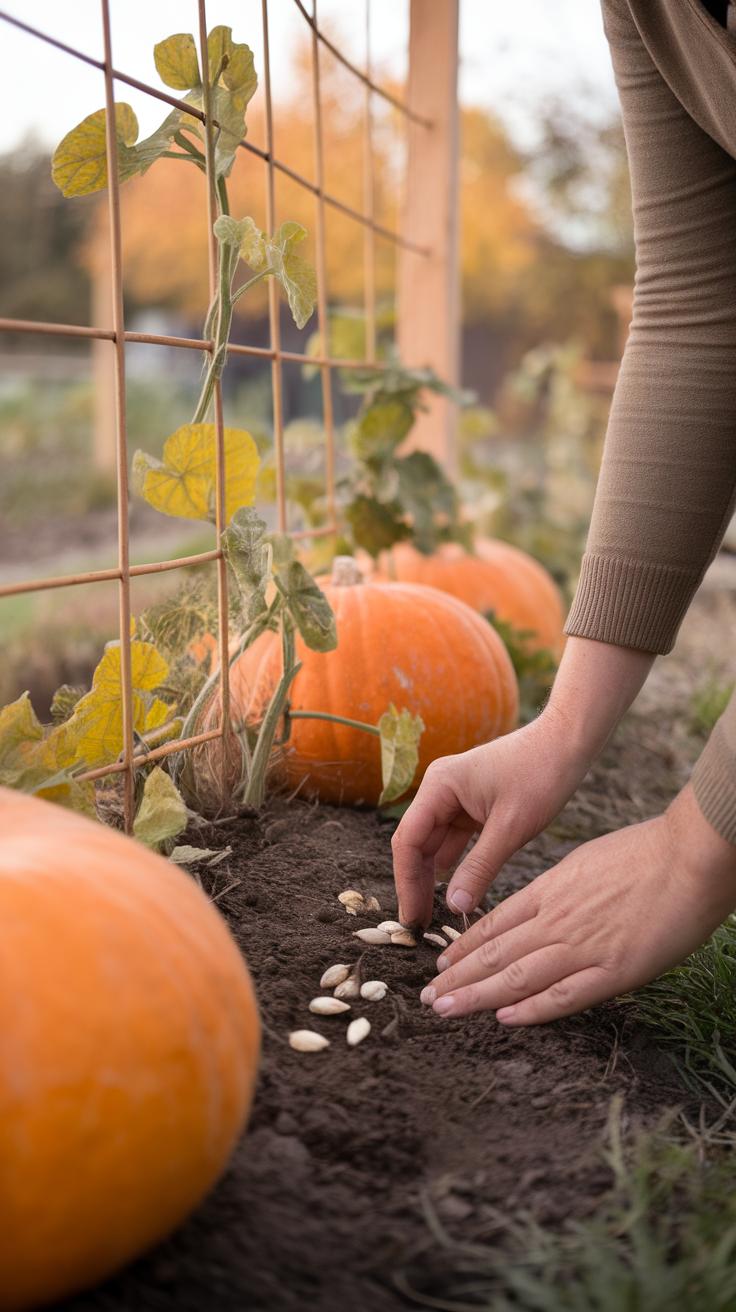
Optimal Planting Methods for Healthy Vines
When cultivating pumpkins on a trellis, choosing the right planting techniques is paramount for robust vine growth and fruitful yields. Start by selecting a trellis that supports not just the weight of the vines but also the developing pumpkins. This may require sturdy materials like wood or metal that can bear the fruits’ weight as they ripen. Plant pumpkin seeds or seedlings about 12 to 18 inches apart at the base of the trellis, allowing ample room for the vines to spread. Soil quality is equally significant; incorporate organic matter to enhance drainage and nutrient content.
Support and Training for Climbing Vines
As the vines begin to grow, gently guide them onto the trellis. It’s beneficial to use soft ties like plant clips or twine to secure young stems without causing damage. Regularly check the vines for growth direction and provide support as needed, especially when the fruits start to form. Positioning early blooms on the trellis allows for more sunlight exposure, assisting in both pollination and ripening. Frequent watering and mulching will keep the soil moisture consistent, promoting healthy root development while preventing weeds that could compete for nutrients.
Maintenance of Your Pumpkin Trellis Ensuring Health and Stability
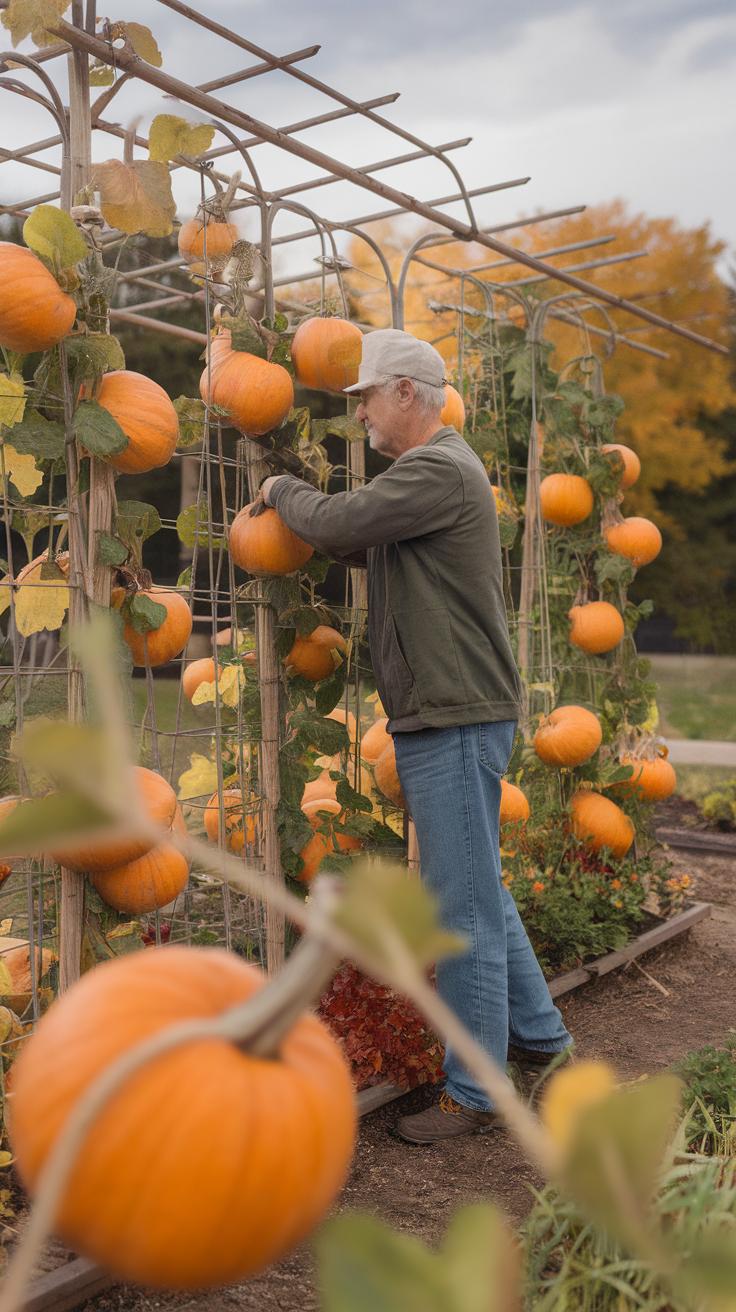
Maintaining Pumpkin Plants on a Trellis
Maintaining both your pumpkin plants and trellis is crucial for achieving a bountiful harvest. Regular inspections should be part of your routine to identify any signs of disease or pests. Keep an eye out for yellowing leaves or unwelcome insects that could harm your plants. Address issues promptly with organic sprays or natural remedies to minimize damage.
Watering practices also play a significant role in plant health. Ensure that the soil remains consistently moist, but avoid waterlogging, as this can lead to root rot. Utilizing mulch can help retain soil moisture and suppress weeds, thereby promoting healthier growth.
Care for the Trellis Structure
Maintaining the trellis itself is equally important. Inspect the structure for any signs of wear or damage, especially if it is made from wood. Regularly clean the trellis to prevent the build-up of algae and mildew, and ensure that the anchorage points remain secure. If any part of the trellis appears unstable, reinforce it promptly to support the weight of growing pumpkins.
Ensure the trellis has adequate spacing to allow sunlight to penetrate through the vines, facilitating photosynthesis. With regular maintenance, your pumpkin trellis can flourish, resulting in healthy plants and an abundant harvest.
Creative Decor Ideas for Trellises Enhance Your Pumpkin Trellis for Festive Gardens
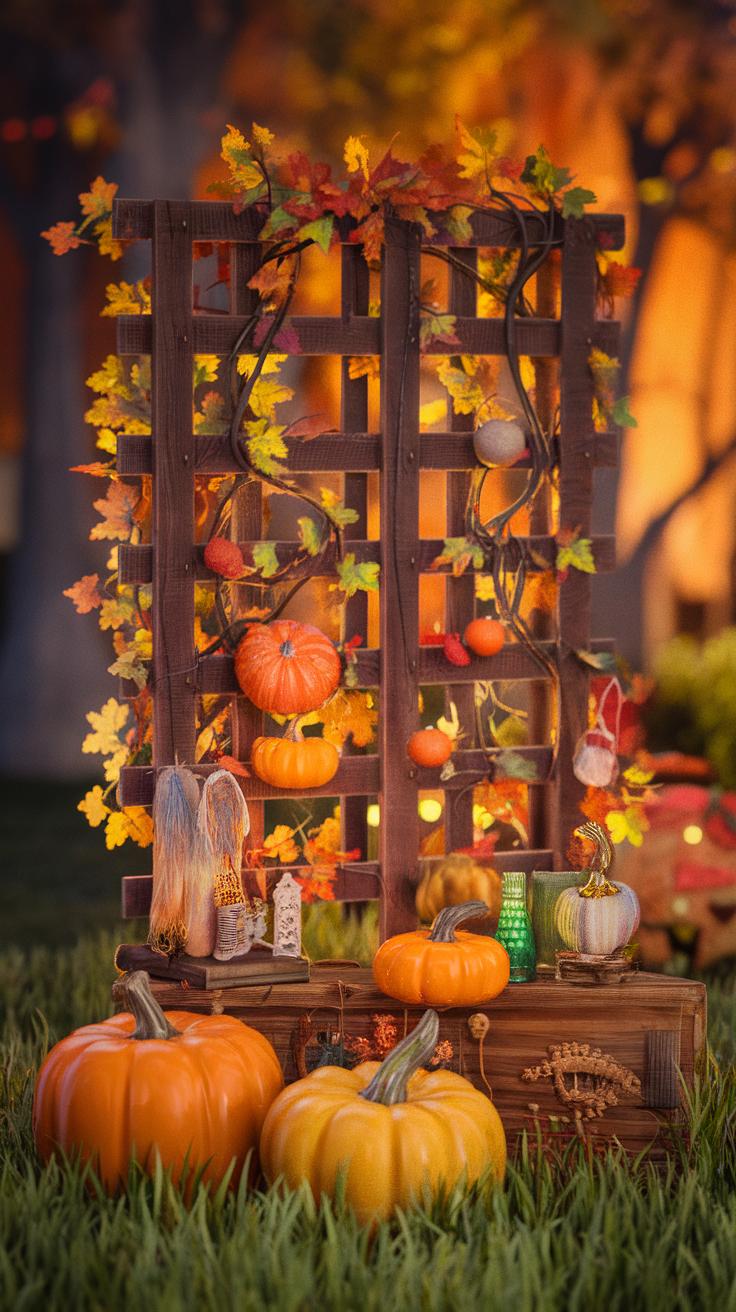
Festive Accessories to Enhance Your Pumpkin Trellis
Transforming your pumpkin trellis into a decorative centerpiece involves incorporating various accessories that celebrate the spirit of the season. Think of draping strings of twinkling lights around the trellis framework. These lights can provide a warm glow during evening gatherings, making your garden enchanting. Using colorful fabric bunting in autumn hues can create a playful atmosphere, while also allowing wind to pass through without damaging your plants.
Other Decorative Innovations
Consider adding seasonal ornaments, such as mini scarecrows or festive ribbons, that align with a harvest theme. These accessories not only bring personality to your trellis but also offer a focal point that can draw attention. Incorporating natural elements like hay bales or gourds at the base of the trellis further enhances the festive look. These creative decor ideas provide an inviting ambiance, making your garden a joyful space to enjoy the bounty of your hard work.
Sharing Your Pumpkin Harvest with Friends and Community
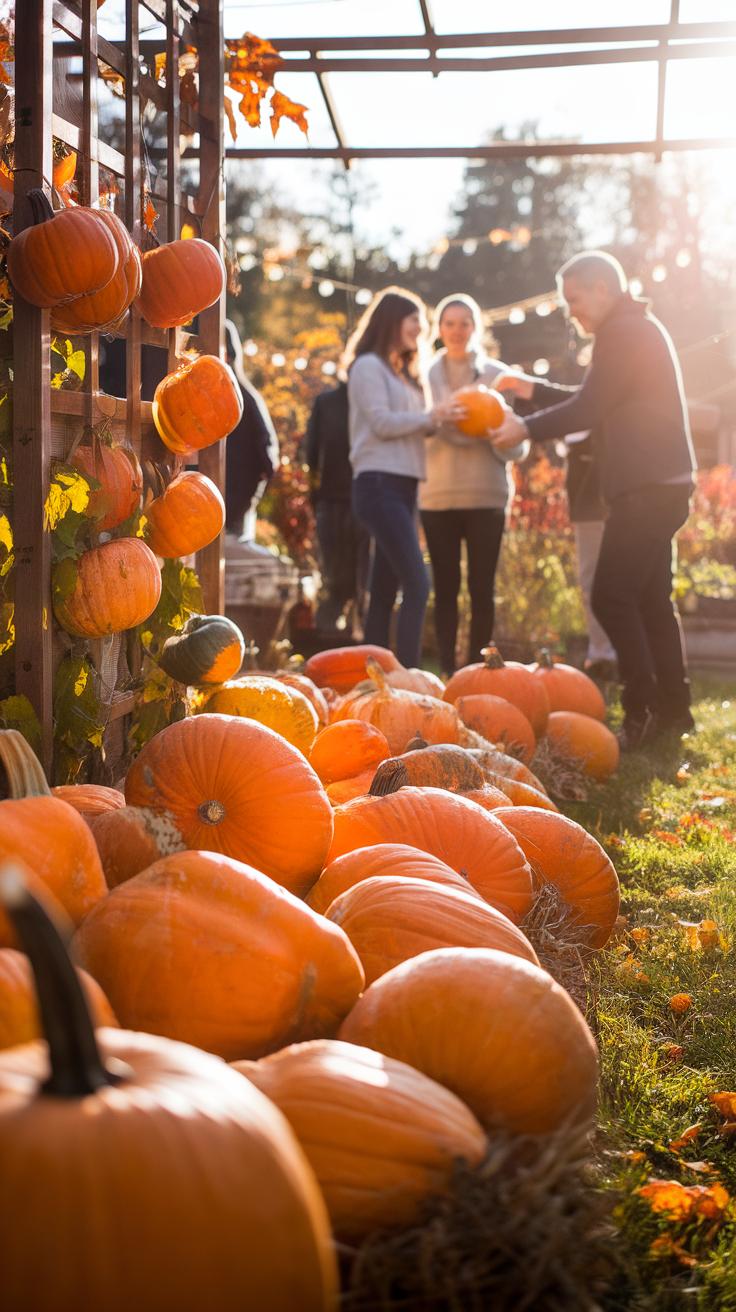
Celebrating Your Pumpkin Bounty
Generosity is at the heart of gardening, and sharing your pumpkin harvest can bring immense joy to both you and your community. After nurturing your trellised pumpkins, gathering friends and neighbors for a harvest celebration allows you to showcase your hard work and creativity. Encourage everyone to enjoy the various uses of pumpkins, from cooking delicious meals to crafting festive decorations.
Organizing a pumpkin exchange or community potluck can elevate the experience, as people come together to share recipes, stories, and their own unique harvests. Consider creating an online community or social media group where neighbors can share photos and tips about their pumpkin cultivation. Events such as these not only strengthen community bonds but also inspire others to start their own pumpkin trellis projects, fostering a love for gardening.
Common Mistakes to Avoid with Trellised Pumpkins

Understanding and Addressing Garden Pitfalls
Growing pumpkins on a trellis can significantly enhance both aesthetics and yield, but several common mistakes may hinder success. One frequent error is inadequate support for heavy fruit. Pumpkins can become quite large; using slings made from fabric or netting helps distribute their weight and prevents breakage. Overcrowding is another issue; allowing too many vines to climb can lead to poor air circulation and increased susceptibility to diseases. Ensuring proper spacing between plants allows each vine to thrive.
Pest management can also pose challenges. Trellised pumpkins may attract different pests than traditional ground-growing methods. Regular monitoring and employing natural deterrents can mitigate potential infestations. Finally, neglecting soil quality can yield disappointing results. Providing rich, well-draining soil and consistent watering ensures pumpkins receive the nutrients they need to flourish on their climbing supports.
Conclusion and Final Thoughts Building and Maintaining a Pumpkin Trellis for a Bountiful Harvest
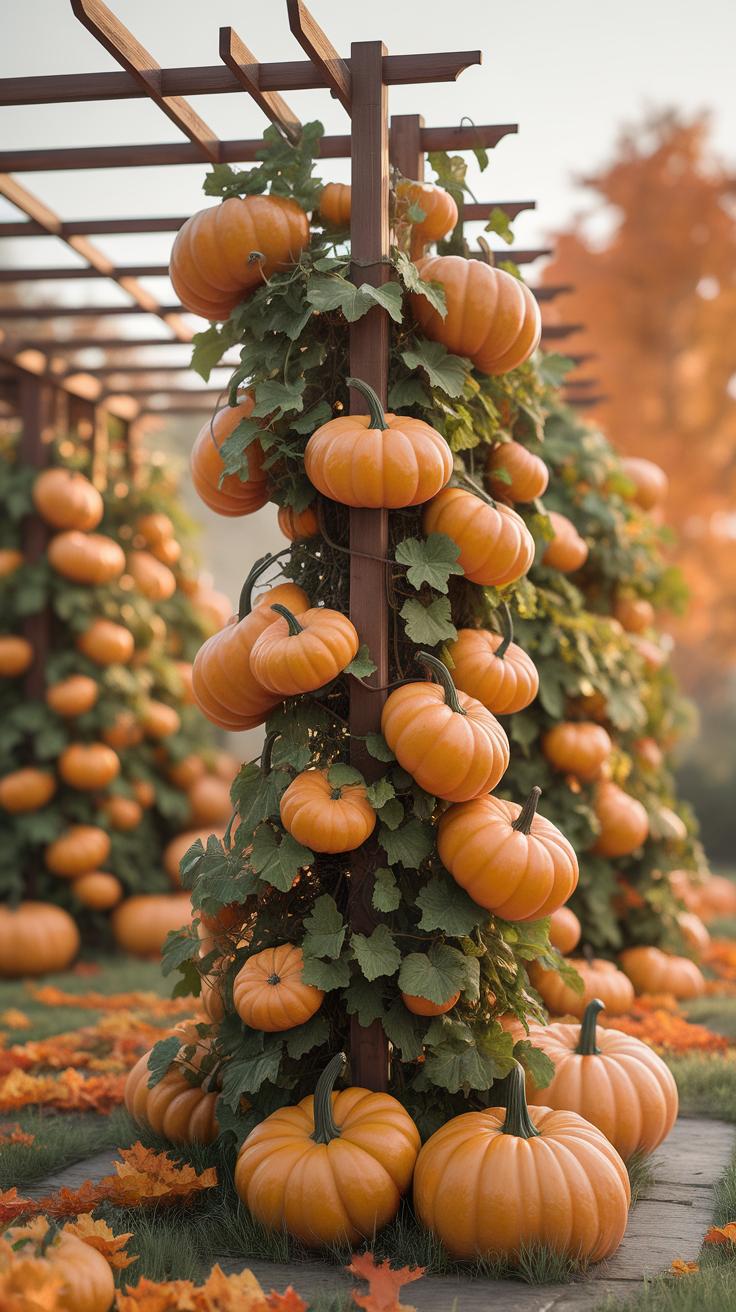
Creating a pumpkin trellis can significantly enhance your garden’s aesthetics and functionality, resulting in healthier plants and a more plentiful harvest. The construction process requires careful planning, selecting sturdy materials, and ensuring proper height and width to accommodate pumpkin vines. Regular maintenance is vital, too; check for stability and make adjustments as necessary to support your pumpkins as they grow.
Incorporating creative designs can transform your garden into a festive display, making trellises a charming focal point. As you embark on this gardening adventure, visualize the vibrant display of pumpkins thriving on a beautifully constructed trellis. With patience and dedication, you will not only cultivate a bountiful harvest but also create a festive atmosphere that welcomes the fall season with open arms.
Conclusions
Incorporating a pumpkin trellis into your garden design presents numerous benefits beyond mere aesthetics. By growing pumpkins vertically, you can save space while improving air circulation around the plants. This encourages healthier growth and minimizes the risk of diseases that often plague ground-level plants. Additionally, the visual appeal of a well-designed trellis can elevate the garden space, making it a central feature that draws admiration from visitors and passersby alike.
The diverse styles of pumpkin trellises discussed throughout this article offer something for everyone, regardless of skill level or garden size. Embracing these creative designs not only enhances the growing experience but also contributes to a festive atmosphere, especially during the harvest season. Whether you opt for a simple DIY project or a more elaborate trellis structure, the charm and productivity brought by pumpkin trellises will undoubtedly enrich your gardening journey.


